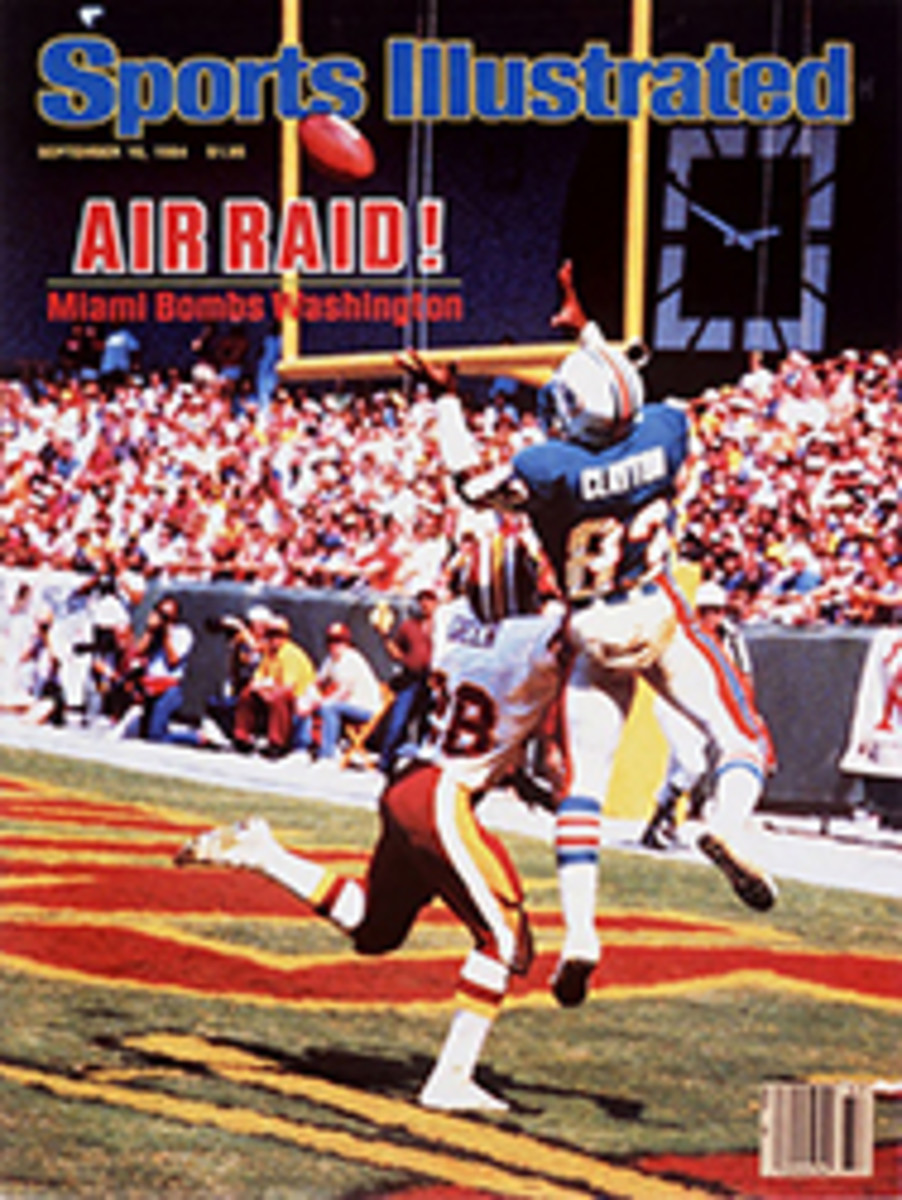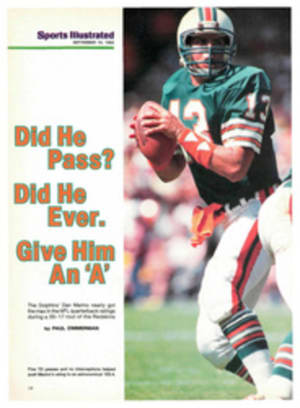
MEET A TINY PRODIGY WHO FREQUENTLY RUNS AWAY FROM HOME IN RECORD TIME
At the age of five—her birthday was Nov. 27—Nasiya Jobe of Richmond, Calif. is rewriting the record book for track and road running. She currently holds nine national age-group records and has two more pending for distances ranging from 400 (1:50.5) to 15,000 meters (1:17:56). A bubbly child with a remarkable gift for running, she has an exceptionally high degree of self-motivation and a father who, rather than pushing his child, is exercising caution in guiding her development.
Darrell Jobe, 33, a cabdriver who began running while training for a semipro football tryout, grew to like the sport for its own sake. When Nasiya (pronounced NAS-ee-yuh) was a baby, Jobe used to take her along in a stroller when he went out to run. He'd put the stroller in the middle of a small neighborhood park so he could keep an eye on her, but as he did his laps on a perimeter track, he noticed that it was she who always had her eyes on him. After a couple of years of this, Nasiya began asking, then begging her father to let her run, too. He kept telling her that she was too small, that she wouldn't be able to keep up with him.
"Then when she got close to the age of four. I guess she got tired of asking, and one day she just took out after me," recalls Jobe. "I'd run half a mile, and I was going to run three more. I was running pretty fast, and I saw that she was keeping up with me. I couldn't believe it. I said to myself, 'Oh, well, she'll tire out after a couple of times around the track,' but she didn't. I'd keep looking back out of the corner of my eye to see her, and I thought, 'Wow, this girl is really keeping up with me!' I'd look at her face to see how hard she was breathing, and she wasn't in any kind of stress at all. So we ran the three miles, and I was shocked."
When Jobe told Nasiya's mother, Mitzi, she, too, was shocked. She was also a bit skeptical, so soon afterward, the couple took their daughter to Oakland's Lake Merritt, and Darrell and Nasiya set out to run around the lake, a distance of 3.1 miles. "It was really on my mind to see how far she could run before she got tired," says Jobe. They ran three times around the lake in one hour and 35 minutes, and according to Jobe, Nasiya wasn't tired and hadn't even broken a sweat.
Realizing how extraordinary his daughter was, Jobe began consulting doctors. They all counseled him not to force Nasiya but to let her run as much as she wanted, as long as she didn't complain of soreness in her ankles or knees.
"She wanted to run all the time," says Jobe. "If I couldn't take her running, she'd get all teary eyed. I'd go to the bank or to pay some bills, and when I'd come back, the baby-sitter would tell me that Nasiya had her count while she ran around the house two or three hundred times."
At four, Nasiya (whose name, says Jobe, means "child of God" in Hebrew) was running from 30 to 40 miles a week, and in her first race she set a 4-year-old age-group record of 48:12 for 10 km. Last November, two days after she'd run 17 miles of a marathon in Los Gatos, Jobe took her to the University of California where, with Cal track coach Erv Hunt holding the stopwatch, Nasiya set a 4-year-old age-group record of 24:05.5 for 5,000 meters.
Hunt was amazed at how quickly she had recovered from the marathon, but he also expressed a concern that caused Jobe to reconsider the amount of running his daughter was permitted to do on a weekly basis. "Hunt told me that she has the potential to be a world-class runner, but to watch her very carefully so that she doesn't burn herself out," he says. "So that's what I'm doing now. I don't let her run 30 to 40 miles a week anymore. And I have other people tell her not to run that much. She loves it and she's always telling me that she wants to be a runner when she gets big, that she wants to run in the Olympics; she did carry the Olympic torch for a 1-km stretch in July. When she was four, I let her do everything she could, and she broke all those records. But now I'm watching her very carefully. I'm only letting her run three days a week now."
One of the difficulties in evaluating Nasiya's situation is the lack of any scientific study of young runners, but several doctors agree that as long as Nasiya enjoys running, is closely watched and not forced, there shouldn't be any problems. Dr. Blair Filler, an Inglewood, Calif. orthopedic surgeon and a marathoner himself, says, "There are a moderate number of children that are running because it's fun to run with your parents. I believe that anytime you use a body within normal limits and it doesn't complain, and if you enjoy it and you're not being pushed, it stands to reason that it will work out all right, particularly in a child, because a child doesn't normally automatically harm itself. The children I've seen in my own practice have had some difficulties in the rapid-growth period—about 12 to 14 among females—with the bones growing to the extent that the overdeveloped leg muscles don't want to stretch as fast, giving them some night muscle pain, but normally a stretching program will alleviate that."
According to Dr. David Kirksey, an Inglewood pediatrician and a jogger, 'The basic point in pediatrics is that sports are good for children if we don't force them or overtrain them. They're supposed to enjoy it. So, as long as she's motivated and having fun, I can't see any contraindications. From what I've read about cultures in which children run a lot, like that of the Tarahumara Indians of Mexico, as long as they follow Mother Nature's rules—i.e., stop if it hurts—I don't think anyone's proven that it would be hard on a child." Neither Kirksey nor Filler has examined Nasiya.
Nasiya's family physician, Dr. Shirley Pan, similarly feels no qualms about Nasiya's running. "Her general health has been excellent," says Pan. "Other than a concern about repeated injuries, I really have no reservations about her running. The only types of things I would be concerned about would be fractures through the growth plates of the bones, which might cause less growth in one leg and therefore result in asymmetrical growth. But that's mainly a matter of not overtaxing. Also, sometimes female athletes, especially competitive-class ones, have had problems with the delay of menses, but that's reversible."
Last month, the Department of Agriculture invited Nasiya and her father, all expense paid, to Washington. There she ran in a government-sponsored one-mile run and was taken on a VIP tour of the White House. Speaking engagements kept the President from attending their previously scheduled meeting, but he will be sending Nasiya a letter acknowledging her achievements. She has also appeared on That's Incredible, as well as various local TV shows, and has her own weekly five-minute cable program, in which she demonstrates the stretching exercises she uses to warm up. So far, the celebrity hasn't seemed to hurt her. "I like being on TV," she says enthusiastically. Her father tries to help her keep things in perspective. "I let her know that running and TV are two different things," he says. "I tell her, 'They want you on TV because you run, not because you're an actress.' I try to help her distinguish." Jobe's efforts seem to have paid off, for as Nasiya's kindergarten teacher, Irene Haraguchi, says, "None of this seems to have gone to her head. She's just one of the kids, and she gets along with everybody. She's very quiet—just really a nice little girl."
Haraguchi says Nasiya's handwriting and coloring skills are outstanding. "It's very unusual to see a child who concentrates on her work as well as she does, and it seems like that would relate to her running," she says.
Indeed, this touches on one of the more intriguing aspects of Nasiya's talent, for quite aside from the physical demands of running long distances, there is the considerable mental discipline that such an effort requires. Ask most 5-year-olds to go from point A to point B, a distance of, say, 100 yards, and there are likely to be a couple of stops along the way. Yet, this 5-year-old can run for two hours without becoming distracted.
"People try to talk to her while she's running," says her father. "They'll say, 'Hey, little girl, what's your name?' She doesn't answer. She's got everything totally blocked out."
"When she runs, she's just running," observes Hunt. "Nothing bothers her. When I timed her in the 5,000, she crossed the finish line and was still running, and her father had to tell her to stop. I'm not real big on small kids running like that, but she's something special. Something was given to her that isn't given to very many people. She didn't get tired running that 5,000. And she actually loves running. So, unless she's injured or decides she hates it, she's just going to get better. If she continues to run and enjoy it, she's really going to be something someday."
Jobe is concerned that other parents may not understand just how unusual Nasiya's gift is. "A lot of people," he says, "come up to me and tell me, 'I wish my child could run like Nasiya. I put him out there and tell him to run, but he won't do it.' But that's not how Nasiya evolved at all. This just didn't happen overnight. I don't want parents dragging their children out and whupping them on the back and making them run, because it isn't like that. Don't expect every child to be able to do this."
TWO PHOTOS
LORRAINE RORKE
See Nasiya run with her dad, Darrell. See her demonstrate one of the stretches she does on TV.

